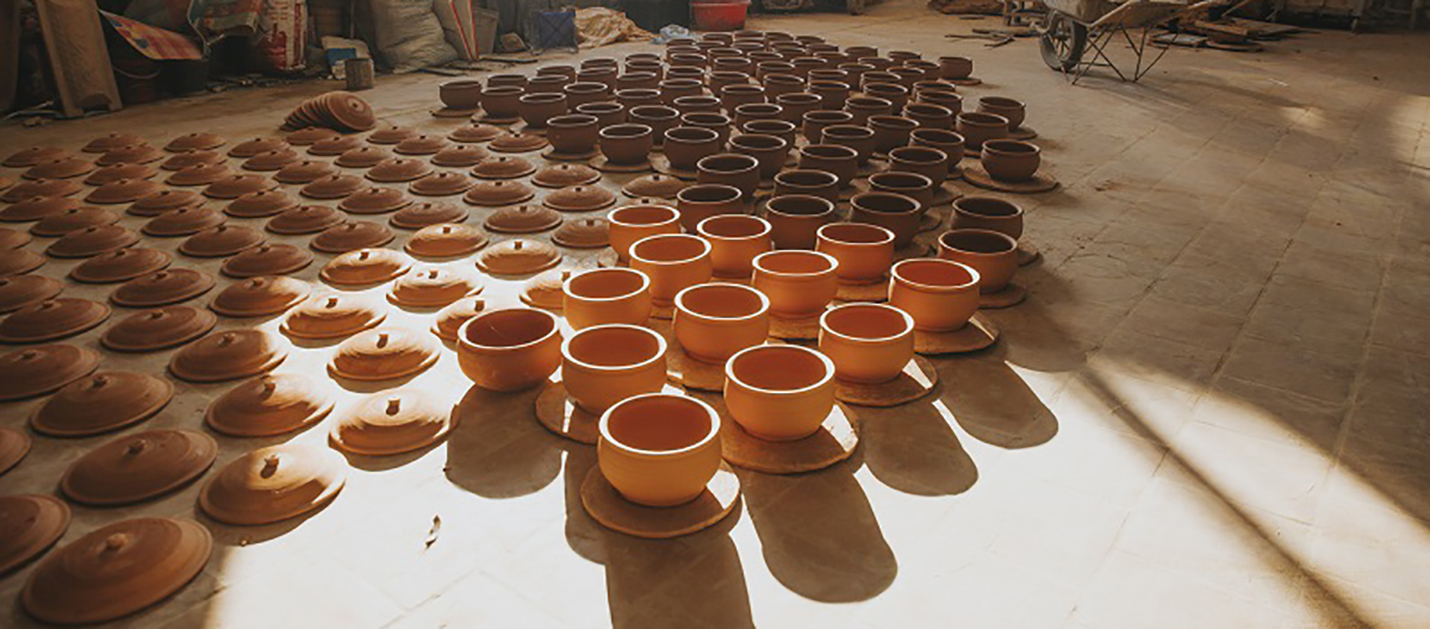
The 700-year-old Phu Lang Pottery Village is Renowned in Bac Ninh Vietnam
The Historic Phu Lang Pottery Village
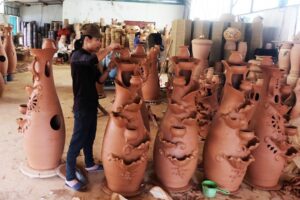
Pottery of Phu Lang village. Photo: Vietnam Journey.
Phu Lang pottery village, located in Que Vo district, Bac Ninh province, has thrived for nearly 700 years, renowned for its intricate ceramics known throughout Vietnam. Established as one of the oldest traditional craft villages in the country, Phu Lang sits along the Cau River with multiple ferry docks facilitating visitor crossings. The village’s history dates back to the late Tran and early Le dynasties, comprising three hamlets: Trung, Thuong, and Ha, all famed for their traditional ceramics. The founder, Luu Phong Tu, learned the art of pottery in China during a diplomatic mission in the Ly Dynasty and passed the knowledge to locals. The craft blossomed around the early 14th century under the Tran Dynasty.
Historical Artifacts and Ceramics

Historical Artifacts and Ceramics
The Vietnam Museum of History currently preserves Phu Lang pottery artifacts dating from the 17th to the 19th centuries. Known for its rich brown glazes and earthy shades like eel skin, light yellow, deep yellow, and golden brown, Phu Lang pottery also features distinctive religious designs. These include dragons, phoenixes, cranes, incense burners, altar vases, and four sacred animals (Long, Ly, Quy, and Phuong) seen in temples, pagodas, and shrines across the Red River Delta.
Categories of Phu Lang Pottery
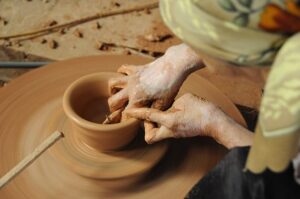
Phu Lang Pottery Village is Renowned in Bac Ninh Vietnam
Phu Lang ceramics are categorized into three main types: ceremonial pottery (incense burners, altar vases, and offering trays), household pottery (jars, vases, basins, storage pots, lime pots, tobacco jars), and decorative pottery (animal-shaped teapots and jars resembling horses, elephants, etc.). Unlike other Vietnamese ceramics, Phu Lang uses red clay sourced from Thong Vat and Cung Khiem in Bac Giang. Artisans dry the clay, mix it, break it into small chunks, soak it, and knead it repeatedly to achieve a fine, soft texture. Before shaping, each piece undergoes ten rounds of kneading before it is crafted on a spinning wheel.
Distinctive Craftsmanship Techniques
Phu Lang potters are renowned for their embossed carving techniques, using a unique bas-relief method called chạm bong or layered carving. Their ceramics are known for natural, resilient glazes and rustic yet strong shapes, with diverse forms and creative sculpting techniques. The two main shaping techniques are wheel forming and casting with wooden or terracotta molds, which are then assembled.
Drying and Firing Process
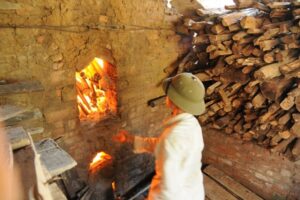
Drying and Firing Process
After shaping, each piece is thoroughly dried to prevent cracking and warping. Modern artisans often use kiln drying, gradually increasing temperatures to allow water to evaporate slowly.
Revival and Resilience of Phu Lang Pottery
More than a decade ago, Phu Lang faced the risk of decline. Today, however, with over 200 kilns in continuous operation, the village is thriving once again. For artisans, making a living from pottery is a privilege, and despite the labor-intensive nature of the work, their passion for the craft endures unwaveringly.
Join the Phu Lang Pottery Village Tour with the Hanoi Bike Tour
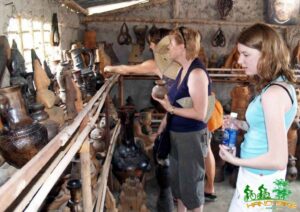
Phu Lang Pottery Village Tour with the Hanoi Bike Tour
Embark on a cycling journey to Phu Lang Pottery Village and Dai Bai Traditional Craft Village of Bronze Casting, immersing yourself in an experience brimming with culture and vivid scenery. From the start, you’ll feel the calming embrace of Northern Vietnam’s landscapes—a refreshing escape from city life as you pedal along narrow paths, verdant fields, and quiet riversides.
Upon arrival in Phu Lang, step into the heart of Vietnam’s pottery heritage. Get hands-on with pottery shaping, explore traditional techniques, and engage with local artisans who bring this ancient art to life. The tour then continues to Dai Bai, where you’ll dive into the world of bronze casting. Here, as you watch artisans meticulously craft bronze works, you’ll witness their remarkable dedication and creativity firsthand.
Read more :
– 3.85 Million Captivated By a Stunning Vietnam Landscape
– Latest Things You Need to Know About Mountain Biking in the Rain
– 13 Important Tips for Cycling Properly
– 7 Tours to Experience Autumn in Hanoi 2024
– Cycling Backpacking 58 Provinces and Cities of Vietnam
>> Follow us more at:


